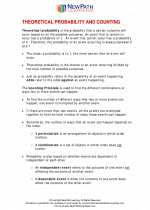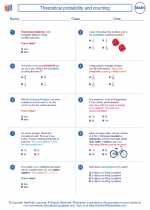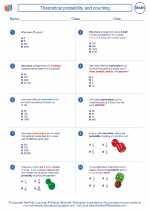Supplementary Angles
Supplementary angles are two angles whose measures add up to 180 degrees. In other words, if you have two angles and you add their measures together, and the result is 180 degrees, then those two angles are supplementary.
Example
For example, angle A measures 120 degrees and angle B measures 60 degrees. When you add the measures together: 120 + 60 = 180, so angle A and angle B are supplementary angles.
Properties of Supplementary Angles
1. Supplementary angles are always a pair of angles.
2. The sum of the measures of supplementary angles is always 180 degrees.
Useful Tips
When working with supplementary angles, you can use the fact that if two angles are supplementary, then you can subtract the measure of one angle from 180 to find the measure of the other angle.
Practice Problems
1. Find the measure of angle B if angle A measures 120 degrees and angle A and angle B are supplementary.
2. If angle X measures 40 degrees, find the measure of the angle that is supplementary to angle X.
Answers
1. To find the measure of angle B, subtract the measure of angle A from 180: 180 - 120 = 60 degrees. So, angle B measures 60 degrees.
2. The measure of the angle that is supplementary to angle X is: 180 - 40 = 140 degrees.
.◂Math Worksheets and Study Guides Eighth Grade. Theoretical probability and counting

 Worksheet/Answer key
Worksheet/Answer key
 Worksheet/Answer key
Worksheet/Answer key
 Worksheet/Answer key
Worksheet/Answer key
